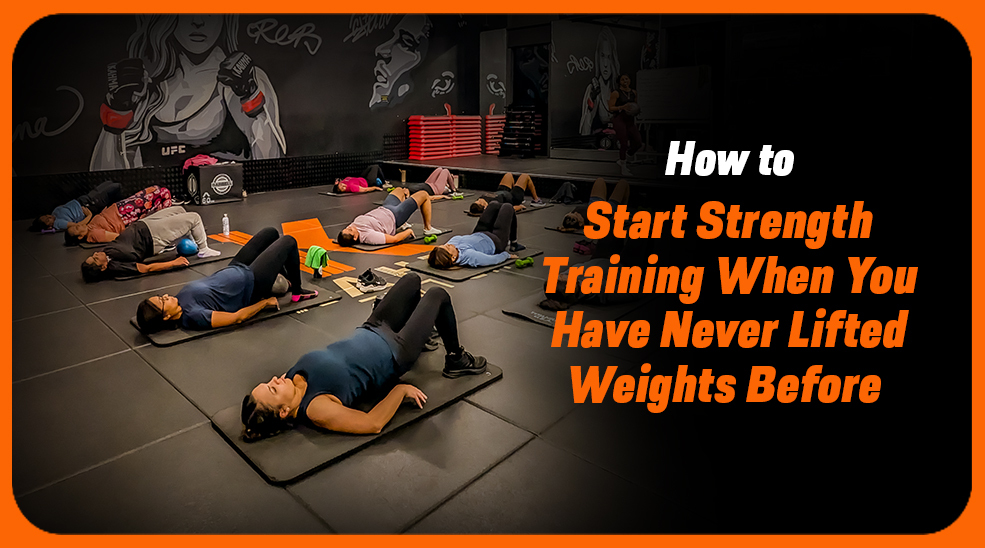ALWAYS OPEN! WE WORK 24/7

Strength training is among the best methods of achieving total well-being, confidence, and functional strength. With that in mind, as a new strength trainer, it is daunting to go out in the gym. "Am I lifting right?" or "Am I going to injure myself?" creep into the mind, and with so much gear on the ground, it can be overwhelming. The biology of strength training, habits of behavior, and progressive safe loading can make it easier and more efficient.
Strength training is not so much about muscle or looks. The evidence is clear in demonstrating that resistance exercise has an impact on almost all bodily systems:
Fat regulation and metabolism: Weight training contributes to increases in lean body mass, resulting in increased resting caloric expenditure.
Bone and joint function: Bone-density-forming weight-bearing exercise and reduced risk of osteoporosis.
Posture and movement: Proper-form strength training enhances stance and balance, reducing the risk of injury on a daily basis.
Psychological benefits: Weight training reduces stress, improves self-esteem, and enhances brain activity.
In novices, they react faster than when training with veteran lifters since body adapts rapidly to new stimulus. Success builds confidence and leads to compliance — two prerequisites of successful long-term fitness.
Most new people are afraid, ashamed, or decision-weary. Psychological studies demonstrate that environment, self-efficacy, and belief in ability all play a strong role in compliance:
Environment is engaged: A structured, uncluttered environment with distinct zones minimizes anxiety and simplifies decisions.
Self-efficacy: Self-confidence is built on early success that is achievable. Being successful at simple exercises reinforces competence feelings.
Goal definition: Clear, short-term objectives (e.g., 10 push-ups or full-body circuit 2x/week) create habits.
Small alterations in design and behavior to the gym can spark comfort and consistency for new members.
Establishing movement patterns before loading up with heavy weight is essential. Bodyweight or light resistance needs to be done by beginners to develop quality movement. Fundamental movement patterns are:
Mastery reduces the risk of injury and maximizes muscle target when applying weights.
Following acclimatization to basic forms, newcomers can progress by adding resistance in steps with dumbbells, kettlebells, or machines:
Progressive development precludes overuse damage and provides time for neuromuscular adjustment. Observation of performance during the early stages, even in the form of notations, improves motivation and is measurable advancement.
A 2–3 times a week, full-body workout routine can be brief and consist of:
Warm-Up (5 minutes)
Strength Circuit (30–35 minutes)
Cool-Down (5 minutes)
Consistency not intensity in the start. Conscientious, thought-through exercise sets precedence and provides confidence.
Muscle adaptation and growth take place outside the gym. Newbies need to prioritize:
Even small care about getting better improves performance, reduces the risk of injury, and leads to long-term adherence.
While self-taught is possible, beginners are assisted by professional instruction. Properly qualified instructors can:
Even sporadic instruction guarantees safe and effective introduction, avoiding well-known mistakes deterring beginners from further practice.
Strength training is time-consuming. Beginners also find themselves worried about what they're lifting or lifting how fast. Instead:
It reduces discouragement and encourages long-term behavior.
No experience, size, or confidence is needed for beginners' strength training in Clyde North— patience, proper technique, and planning are needed. Strength may be acquired safely, health may be improved, and one may feel confident by emphasizing fundamentals, progressive gains, recovery, and realistic expectations.
Even in the average gym environment, a focus on mood, beauty, and effective teaching speeds comfort and function. Small informed decisions in your process earn long-term rewards and ongoing rewards.